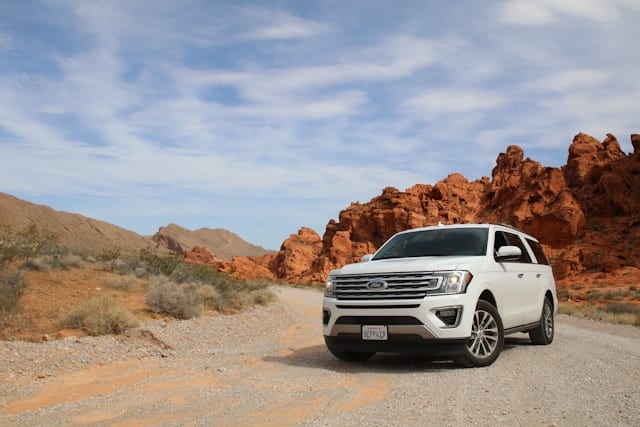Can a Specific Driving Technique Extend the Range of a Nissan Leaf Electric Vehicle?

As electric vehicles (EVs) continue to surge in popularity, it’s essential to acknowledge a key concern: the vehicle’s range. What if you were told that the range of your Nissan Leaf EV could be improved not just by technological advancements, but also by your driving technique? If that sounds intriguing, you’re in for an informative read. This article will explore the vital role driving technique plays in extending your Nissan Leaf’s range.
Understanding the Nissan Leaf’s Battery and Range
Before diving into the driving techniques, it’s crucial to understand the basic infrastructure of the Nissan Leaf electric vehicle. The Nissan Leaf, one of the leading electric vehicles on the market, is powered by a lithium-ion battery.
Dans le meme genre : What’s the Best Way to Replace the Timing Belt in a Fiat 500 Abarth without Compromising Engine Timing?
The Leaf’s battery is rated at 40 kWh for the base model, although a more potent 62 kWh version is also available. The 40 kWh battery provides a range of approximately 150 miles, while the 62 kWh battery extends this to somewhere around 226 miles on a single charge. However, these figures can vary significantly based on several factors, including driving conditions, vehicle load, and, most notably, driving technique.
Mastering the Art of Efficient Electric Vehicle Driving
Driving an electric vehicle like the Nissan Leaf isn’t vastly different from driving a traditional car. However, there are certain driving techniques you can adopt to make the most of your EV’s range.
Avez-vous vu cela : How to Install an Electronic Active Stabilizer Bar on a Jeep Grand Cherokee for Enhanced Off-Road Capability?
How Speed Impacts Range
Just like with gasoline-powered cars, the speed at which you drive your Nissan Leaf significantly affects the vehicle’s range. Electric vehicles, including the Nissan Leaf, are most efficient at moderate speeds. As speed increases, the energy required to overcome wind resistance rises exponentially, subsequently draining the battery at a faster rate.
By sticking to a moderate speed, you allow your Leaf to operate within its most efficient power band. This leads to less energy consumption, leading to an extended range.
The Power of Regenerative Braking
Regenerative braking is a unique feature in many electric and hybrid vehicles, including the Nissan Leaf. When you apply the brakes or lift off the accelerator, the electric motor operates in reverse to slow the vehicle down, generating electricity in the process. This energy is then fed back into the battery, extending the overall range.
To maximize the benefits of regenerative braking, try to drive smoothly and anticipate stops and slowdowns. Abrupt stops are not only unsafe but also less efficient, as they don’t make full use of the regenerative braking feature.
Effect of Charging Habits on Battery Health
Charging habits can have a significant effect on the health and longevity of your Nissan Leaf’s battery, ultimately influencing its range. Nissan recommends charging the Leaf’s battery to no more than 80% capacity under normal circumstances. This is because keeping a lithium-ion battery at its maximum charge for extended periods can degrade its overall capacity over time.
Moreover, frequent fast charging can also have a detrimental effect on the battery’s health and should be used sparingly. Ideally, the Nissan Leaf should be charged overnight using a dedicated home charging point, which provides a consistent and steady charge.
Efficient Use of Energy Inside the Vehicle
The energy used inside your Nissan Leaf — for heating, air conditioning, and other electrical systems — can also affect the vehicle’s range. By using these systems prudently, you can conserve battery power and extend your driving range.
For example, consider pre-conditioning your vehicle while it’s still plugged in and charging. This way, by the time you’re ready to drive, the cabin will be at a comfortable temperature, and the battery’s power can be used solely for driving.
The Future of Nissan Leaf Range
Moving forward, technological advancements will undoubtedly continue to improve the Nissan Leaf’s range. However, as current Leaf drivers, you’re not powerless. By mastering efficient driving techniques and understanding how your Leaf uses energy, you can significantly extend your vehicle’s range right now. This isn’t just about squeezing every last mile out of your battery; it’s about driving in a way that’s efficient, mindful, and sustainable. After all, that’s what electric vehicles like the Nissan Leaf are all about.
In conclusion, by practicing and mastering these efficient driving techniques, you can indeed extend the range of your Nissan Leaf electric vehicle. The key lies in understanding your vehicle’s characteristics and how it uses energy, and then adjusting your driving habits accordingly. So go ahead, give it a try, and see how much further your Nissan Leaf can take you.
Adapting to Weather Conditions and Using Charging Stations
Electric vehicles like the Nissan Leaf are directly affected by weather conditions. Cold weather, in particular, can decrease the battery capacity and reduce the driving range. This is primarily because the lithium-ion battery pack is less efficient in low temperatures, and additional energy is required for heating the vehicle. However, with thoughtful preparation and efficient use of the car’s features, you can mitigate these effects to a certain extent.
During cold weather, pre-condition your Nissan Leaf while it’s still plugged into the charging station. This way, you’re using the electricity from the grid to heat your car before you start your journey, rather than the battery’s energy. Also, consider using heated seats and steering wheel, if available, rather than blasting the cabin heater, as they use less energy.
In hot weather, utilize the car’s pre-cooling function while it’s still connected to the charging station. This will ensure that the cabin is cool when you start your journey, reducing the need for air conditioning while driving.
Public charging stations can also play a significant role in extending your Nissan Leaf’s range. Strategically planning your route to include charging stations can alleviate the range anxiety associated with electric cars. Make use of rapid chargers at motorway service stations or destination charging points at places like shopping centers, restaurants, and hotels for topping up your battery pack. This way, you can extend your driving range, particularly for longer journeys.
Embracing the Nissan Leaf’s Eco Mode and B Mode
Your Nissan Leaf comes equipped with two features that can further enhance the efficiency of your driving and extend your battery’s charge: Eco mode and B mode.
Eco mode modifies the vehicle’s performance characteristics to prioritize efficiency over speed. When engaged, Eco mode reduces the response of the accelerator pedal, leading to a gentler power delivery. This can result in less energy use and an extended range. However, the car’s performance is slightly compromised, and acceleration might feel less responsive.
B mode, on the other hand, emphasizes the Leaf’s regenerative braking system. When you lift your foot off the accelerator pedal in B mode, the regenerative braking is more aggressive, leading to a stronger deceleration and more energy being fed back into the battery. Combining B mode with Eco mode can provide the maximum range extender benefit.
In Conclusion: Unleashing the Full Potential of Your Nissan Leaf
The Nissan Leaf electric vehicle is a combination of revolutionary technology and innovative design. Its potential goes beyond just the figures provided by the manufacturer. You, as the driver, can significantly influence the range of your Nissan Leaf by adapting your driving techniques and habits to suit the characteristics of the car.
Utilize the understanding of how speed impacts your EV’s range, harness the power of regenerative braking, be mindful of your charging habits, and efficiently use energy inside the vehicle. Adapt to weather conditions and make efficient use of charging stations. Finally, leverage the Leaf’s Eco mode and B mode to maximize your driving range.
By implementing these practices, you can extend your Nissan Leaf’s range, making your journeys more efficient and sustainable. It’s time to embrace the world of electric cars and unleash the full potential of your Nissan Leaf. Happy and efficient driving!
Remember, with the Nissan Leaf, you’re not just driving; you’re driving change.
